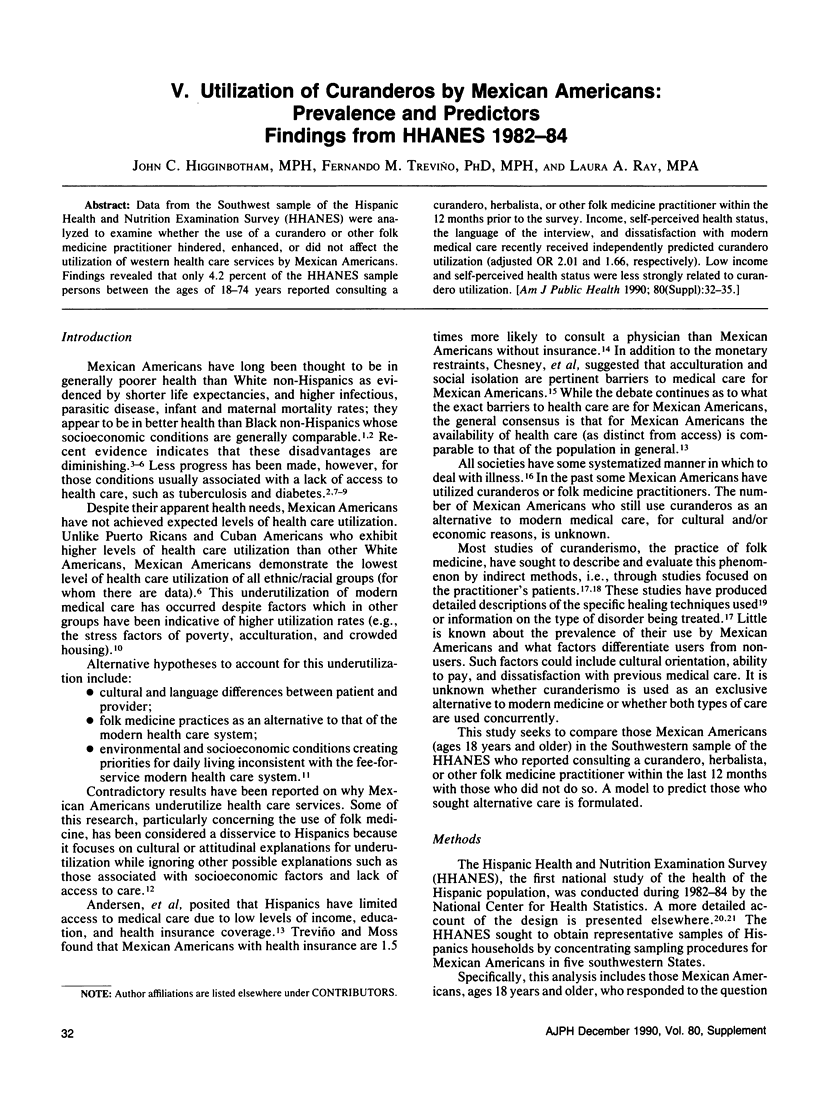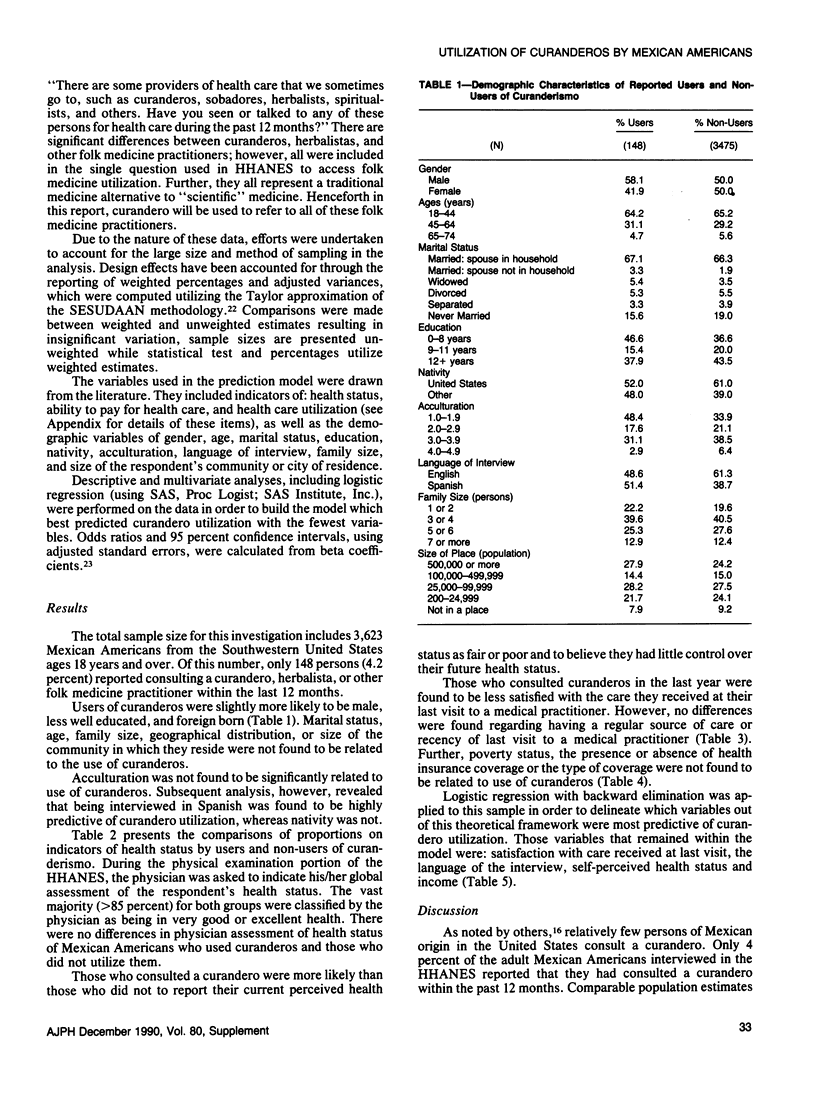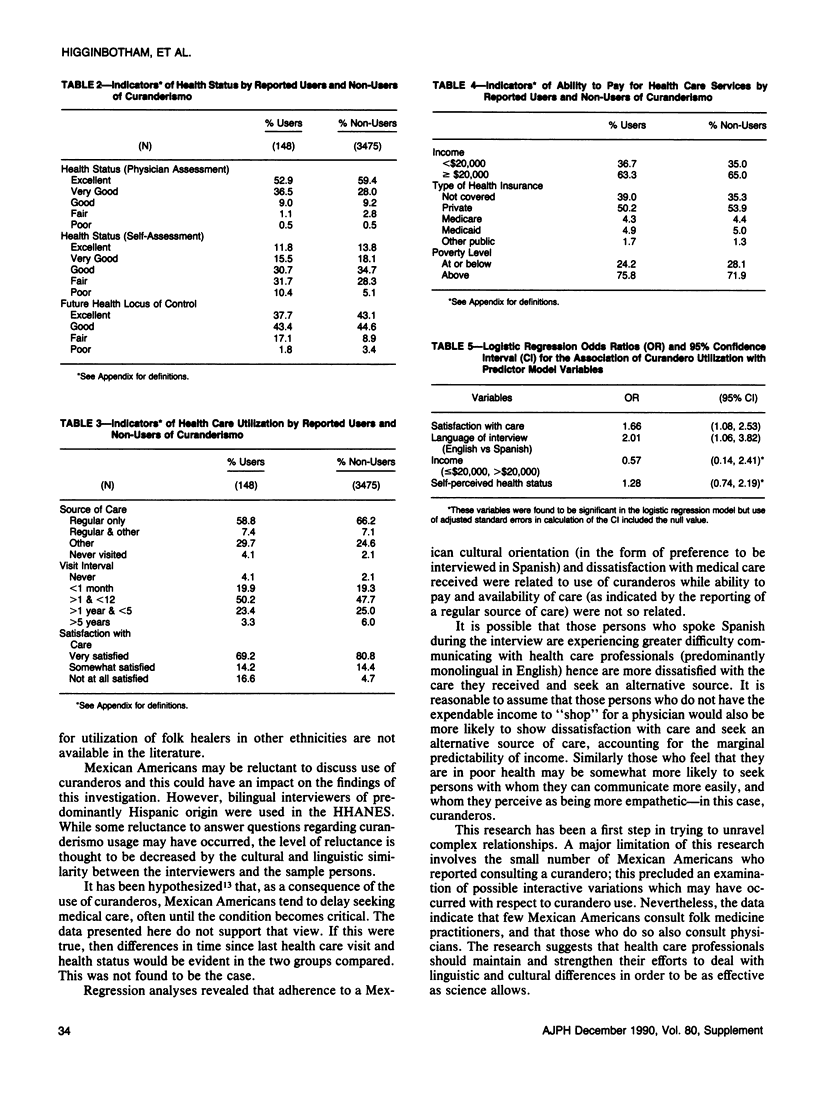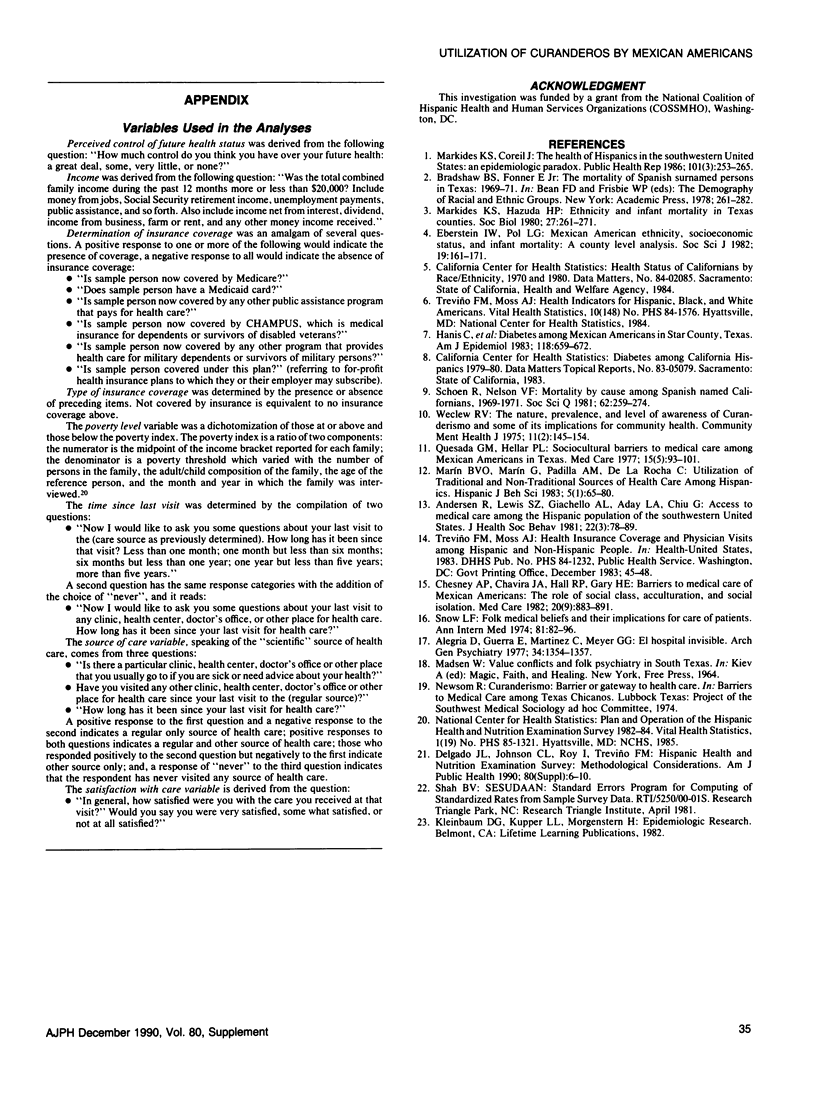Abstract
Data from the Southwest sample of the Hispanic Health and Nutrition Examination Survey (HHANES) were analyzed to examine whether the use of a curandero or other folk medicine practitioner hindered, enhanced, or did not affect the utilization of western health care services by Mexican Americans. Findings revealed that only 4.2 percent of the HHANES sample persons between the ages of 18-74 years reported consulting a curandero, herbalista, or other folk medicine practitioner within the 12 months prior to the survey. Income, self-perceived health status, the language of the interview, and dissatisfaction with modern medical care recently received independently predicted curandero utilization (adjusted OR 2.01 and 1.66, respectively). Low income and self-perceived health status were less strongly related to curandero utilization.
Full text
PDF



Selected References
These references are in PubMed. This may not be the complete list of references from this article.
- Alegria D., Guerra E., Martinez C., Jr, Meyer G. G. El hospital invisible. A study of Curanderismo. Arch Gen Psychiatry. 1977 Nov;34(11):1354–1357. doi: 10.1001/archpsyc.1977.01770230096009. [DOI] [PubMed] [Google Scholar]
- Andersen R., Lewis S. Z., Giachello A. L., Aday L. A., Chiu G. Access to medical care among the Hispanic population of the southwestern United States. J Health Soc Behav. 1981 Mar;22(1):78–89. [PubMed] [Google Scholar]
- Chesney A. P., Chavira J. A., Hall R. P., Gary H. E., Jr Barriers to medical care of Mexican-Americans: the role of social class, acculturation, and social isolation. Med Care. 1982 Sep;20(9):883–891. doi: 10.1097/00005650-198209000-00002. [DOI] [PubMed] [Google Scholar]
- Delgado J. L., Johnson C. L., Roy I., Treviño F. M. Hispanic Health and Nutrition Examination Survey: methodological considerations. Am J Public Health. 1990 Dec;80 (Suppl):6–10. doi: 10.2105/ajph.80.suppl.6. [DOI] [PMC free article] [PubMed] [Google Scholar]
- Hanis C. L., Ferrell R. E., Barton S. A., Aguilar L., Garza-Ibarra A., Tulloch B. R., Garcia C. A., Schull W. J. Diabetes among Mexican Americans in Starr County, Texas. Am J Epidemiol. 1983 Nov;118(5):659–672. doi: 10.1093/oxfordjournals.aje.a113677. [DOI] [PubMed] [Google Scholar]
- Markides K. S., Coreil J. The health of Hispanics in the southwestern United States: an epidemiologic paradox. Public Health Rep. 1986 May-Jun;101(3):253–265. [PMC free article] [PubMed] [Google Scholar]
- Markides K. S., Hazuda H. P. Ethnicity and infant mortality in Texas counties. Soc Biol. 1980 Winter;27(4):261–271. doi: 10.1080/19485565.1980.9988429. [DOI] [PubMed] [Google Scholar]
- Quesada G. M., Heller P. L. Sociocultural barriers to medical care among Mexican Americans in Texas: a summary report of research conducted by the Southwest Medical Sociology Ad Hoc Committee. Med Care. 1977 May;15(5 Suppl):93–101. doi: 10.1097/00005650-197705001-00010. [DOI] [PubMed] [Google Scholar]
- Schoen R., Nelson V. E. Mortality by cause among Spanish surnamed Californians, 1969-71. Soc Sci Q. 1981;62(2):259–274. [PubMed] [Google Scholar]
- Snow L. F. Folk medical beliefs and their implications for care of patients. A review bases on studies among black Americans. Ann Intern Med. 1974 Jul;81(1):82–96. doi: 10.7326/0003-4819-81-1-82. [DOI] [PubMed] [Google Scholar]
- Weclew R. V. The nature, prevalence, and level of awarenes of "curanderismo" and some of its implications for community mental health. Community Ment Health J. 1975 Summer;11(2):145–154. doi: 10.1007/BF01420352. [DOI] [PubMed] [Google Scholar]


